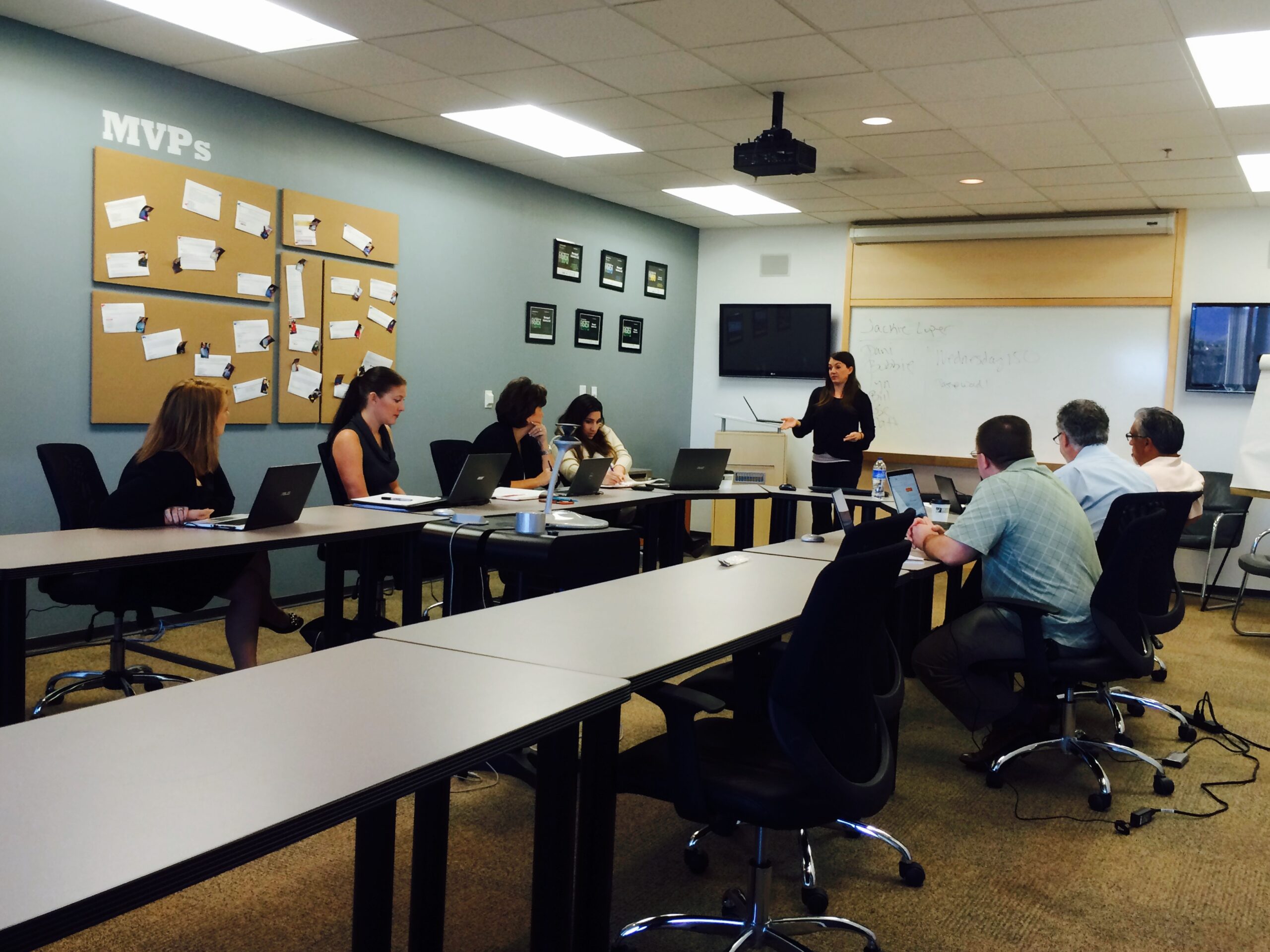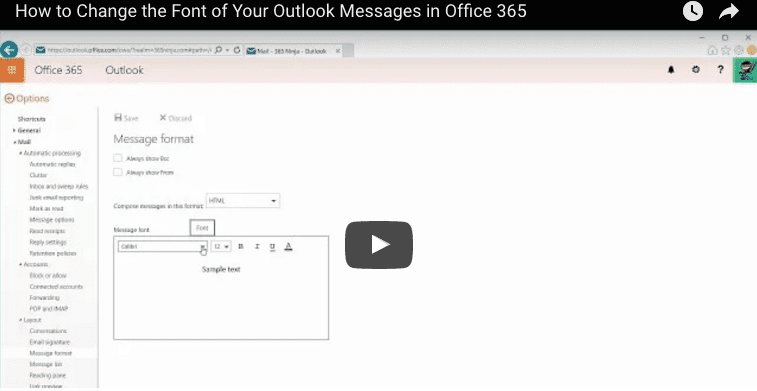Real-estate firm uses CRM solution to manage data for greater efficiency and insight
Granite Properties acquires, develops, leases, and manages prime commercial properties in Atlanta, Dallas, Denver, and Houston. The company needed more effective information management practices to free employees’ time and improve business visibility. After examining several customer relationship management options, Granite Properties chose to implement Real Estate Advantage, which is targeted at the commercial real-estate industry and based on Microsoft Dynamics CRM.
Granite Properties rolled out the solution to its investment group and is working on tailored deployments for its leasing and operations groups. Employees enjoy the way the solution works with Microsoft Office Outlook 2007, provides real-time data through Microsoft Office SharePoint Server 2007, and eliminates duplicate data entry and time-consuming tasks.
Situation
Established in 1991, Granite Properties owns and manages a portfolio of office, retail, and industrial space in Atlanta, Dallas, Denver, and Houston totaling more than 10.5 million square feet. As an owner-operator, Granite Properties’s activities revolve around the acquisition, development, leasing, and management of its assets.
The company’s investments group seeks out opportunities for development and acquisition and has made over U.S.$2.6 billion in property investments since the company’s inception. The construction group supervises build-to-suit and finishing of spaces, and the leasing group works with peers in the industry to find tenants for those spaces. In recent years, Granite Properties has closed more than 250 lease transactions, ranging from 1,000-square-feet leases to deals involving upwards of 200,000 square feet. In addition, the company’s operations group manages the properties and oversees accounting, risk management, and technology.
As the firm grew in geography and assets, Granite Properties needed to systematize how employees managed information about buildings and leases. “Information management was an acute problem in our investments team, which is comprised of about 12 people who identify and acquire new properties,” explains Craig Scullin, Manager of Information Systems at Granite Properties. “People used their email accounts as digital filing cabinets, and some recorded critical information in paper documents. This made pulling together comprehensive reports a difficult and time-consuming process.”
Managers tracked key indicators of business performance by collecting information in Microsoft Office Excel 2007 spreadsheets, such as turnover rates and the ability to close investment deals. However, this process was susceptible to error and employees could not easily determine if data in the spreadsheets was up-to-date. And, because of the decentralized nature of the process, managers could not easily do a side-by-side comparison of data coming from different cities.
“We couldn’t get an all-up summary of these reports based in Office Excel 2007, and one report didn’t update another, which meant a lot of duplicate work for our team members,” explains Scullin. “Our company management considered implementing a customer relationship management system, but was skeptical that popular offerings could adequately meet our requirements without significant customization.”
The investments department worked closely with the IT group to find an appropriate customer relationship management solution that would meet the company’s business and technology needs. Specifically, Granite Properties was looking for a solution that met the following criteria.
A shallow learning curve
“Many of our brokers are nontechnical folks who are very comfortable with Microsoft Office Outlook 2007,” says Scullin. “We needed to win support among employees, so we sought a solution that would work well with Office Outlook 2007 and offer clear benefits for people who use it.”
An open architecture
Granite Properties sought a solution that could integrate with its JD Edwards financial management software. “We wanted to make information from JD Edwards available directly in the customer relationship management solution,” says Scullin. “Our employees often need information on leases from the JD Edwards system but are not confident navigating it.”
A single version of the truth
Granite Properties wanted to use the customer relationship management solution to standardize how it defined terms like “occupancy” across the company.
A solution based on Microsoft SQL Server
The company wanted to take advantage of Microsoft SQL Server Reporting Services. “Our technology vision involves using SQL Server Reporting Services as a business intelligence platform for the company,” explains Scullin. “We didn’t want to have to write the same report in different systems.”
Solution
The IT group at Granite Properties considered several customer relationship management offerings from Microsoft, Oracle, Siebel, Netage Solutions, and other vendors. Early on, the group decided against the offering from Oracle (Siebel CRM) because of the lack of real-estate-specific functionality. While investigating Microsoft Dynamics CRM, Granite Properties found out about Real Estate Advantage, which is based on Microsoft Dynamics CRM and adds functionality specific to the commercial real-estate industry.
Granite Properties implemented the new solution, but spent a considerable effort beforehand documenting business processes and user needs. “We took advantage of the customer relationship management project to map out our process flows and standardize our business based on what we decided were best practices,” says Scullin.
Deploying the solution
Including the time spent working on business processes, Granite Properties was able to implement the solution in seven months. The company took advantage of the multitenant architecture of Microsoft Dynamics CRM to create a distinct application for its investments group and plans to do the same for its leasing, development, and operations groups. This approach provides a tailored experience for individual roles that helps improve user acceptance and productivity.
“Microsoft Dynamics CRM is flexible and lets us easily customize applications for each of our groups while working from the same platform,” explains Scullin. “All the information will be housed in the same data store, but our employees will only see the information and functionality that is relevant to their group.”
With Real Estate Advantage rolled out to 12 users on its investments team, Granite Properties is working on additional deployments for the company’s leasing group, which will cover an additional 10 users, and development and operations groups, which will include up to 40 additional users. The overarching theme for these deployments is managing information about tenants, brokers, and properties on a companywide basis.
“Each application will help individuals and teams work more efficiently,” says Scullin. “But, the larger benefit will be visibility across the company. People will be able to see the progress of development projects and what the discussions during the leasing phase were like for a particular tenant. Visibility across all our operations will help us serve tenants better.”
Currently, Granite Properties is preparing Real Estate Advantage for deployment in its leasing group by gathering contacts that employees have stored in Office Outlook 2007 and their mobile devices. “We’re putting all the information and functionality that our leasing agents need into the application,” says Scullin. “For example, we’re integrating the solution with our JD Edwards application so that brokers don’t need to log on to that system to work on a contract. Instead, they will have everything they need in a single tool.”
Using workflow, business intelligence, and mapping
Looking ahead, Granite Properties plans to use the Action Plans feature in Real Estate Advantage to automate workflow processes, such as lease approvals. “The idea with Action Plans is that when employees initiate a lease agreement, the system will automatically assign tasks with deadlines and update the dashboard on Microsoft Office SharePoint Server 2007,” says Scullin.
Granite Properties uses Office SharePoint Server 2007 to distribute reports and real-time business intelligence that is pulled from the Real Estate Advantage solution and the JD Edwards financial management software. The company set up a variety of real-time reports in SQL Server Reporting Services that automatically pull together information that previously took several days to collect.
Employees can also view graphic representations of key performance indicators on their Office SharePoint Server 2007 dashboards, with information updated as it is entered into Real Estate Advantage. If they want to investigate a trend or abnormal metric, employees can click on the chart or graph to drill down into the underlying records for a particular asset or deal.
The investments team at Granite Properties enjoys the integration of Bing Maps in Real Estate Advantage, which lets team members easily investigate potential investment properties in other cities. From within the application, they can view properties from various aspects, such as hybrid, bird’s eye, and street-level views, and layers of data on the map, such as nearby banks and schools.
Benefits
In Real Estate Advantage, Granite Properties found a customer relationship management solution aimed at the commercial real-estate industry that is easy to learn and use, supports the use of standardized best practices, and fits with the company’s existing IT infrastructure. “Implementing and using Real Estate Advantage has been a bit like using a TV remote for the first time,” says Scullin. “When you start using it, you wonder how you ever lived without it. This customer relationship management project was absolutely critical for our company and will help us capture future opportunities.”
Companywide visibility
Information flows unimpeded throughout Granite Properties so that employees have an up-to-date view of activities in another group. The company takes advantage of Office SharePoint Server 2007 and SQL Server Reporting Services to provide real-time reporting and business intelligence to people so that they can make better-informed decisions.
“Critical information is no longer obscured. If we have the same client in different cities, we know about it and can negotiate the best deal possible,” says Scullin.
Because data is entered into the system only once and stored in a single location, Granite Properties can more easily maintain a single version of the truth. As Scullin notes, “We no longer need to remember to update our spreadsheets or remember where a particular set of information is stored. Everyone across teams and geographies is looking at the same data.”
Fast user adoption
Granite Properties appreciates that Real Estate Advantage works well with Office Outlook 2007, which many employees at the company rely on to complete work every day. “When we were still in the exploratory stage, what impressed our team members the most about Real Estate Advantage was how it worked just like Office Outlook 2007,” says Scullin. “And, after we implemented the solution, people intuitively understood how to navigate and use the solution, so the learning curve was low and adoption was good.”
Because of the technical flexibility of Microsoft Dynamics CRM, the IT team at Granite Properties was able to quickly adjust the user interface in response to requests, which also helped increase acceptance among employees. Employees in the investments group also appreciate the integration of Bing Maps directly in the user interface, which enables them to check out properties before physically visiting the sites. “Bing Maps brought a lot of ‘Oohs’ and ‘Aahs’ from our employees,” says Scullin.
Greater productivity
Real Estate Advantage gives employees at Granite Properties powerful new tools to help them increase productivity. For example, the investments group used to spend two days each month pulling together Office Excel 2007–based reports. Now, employees can generate these reports on demand in just seconds.
Once or twice each year, the investments group would research market data and other data sources to create larger reports. Says Scullin, “Although these jobs still require some investigation, employees can draw 90 percent of the information directly from SQL Server Reporting Services, which makes the process much faster.”
On a day-to-day basis, employees use Real Estate Advantage to retrieve information that they previously might have asked other people to collect for them. “The solution is changing the way we do things, and it’s all for the better,” says Scullin. “It’s helping us do our jobs more efficiently and effectively.”
Continued Reading

November 19, 2015
Private CIE Workshop Today @Managed Solution: Redefine Your Reality & Register for an Upcoming Immersive Microsoft Workshop (CIE). Complimentary for a limited time.
A private Customer Immersion Experience (CIE) was conducted for a […]
LEARN MORE
November 20, 2015
How to Change the Font of Your Outlook Messages in Office 365
Sick of Calibri? You don’t have to stick with Office […]
LEARN MORE
